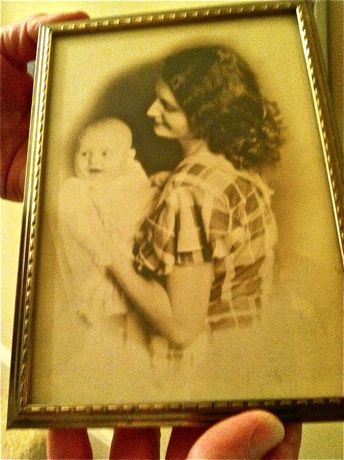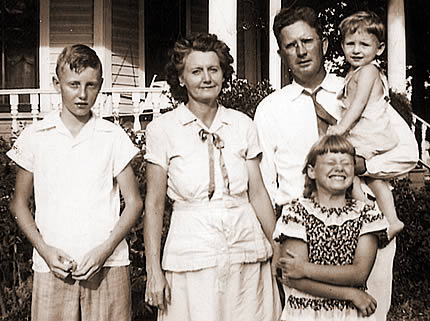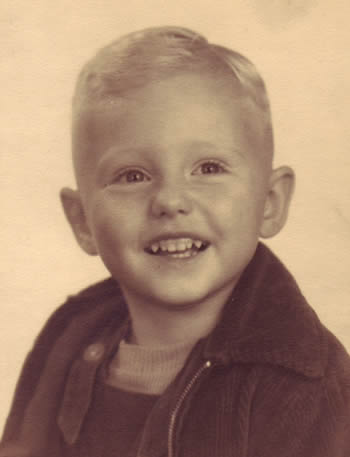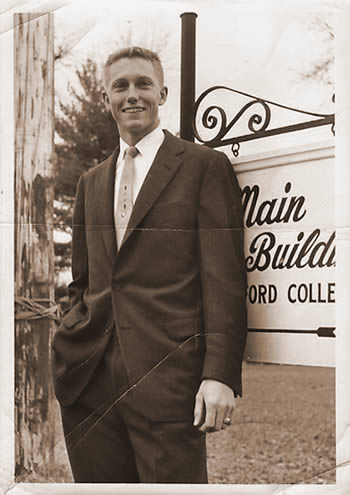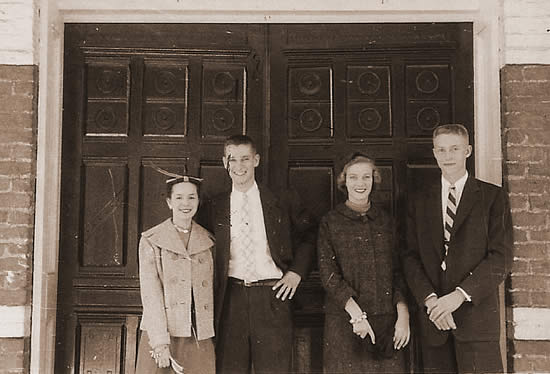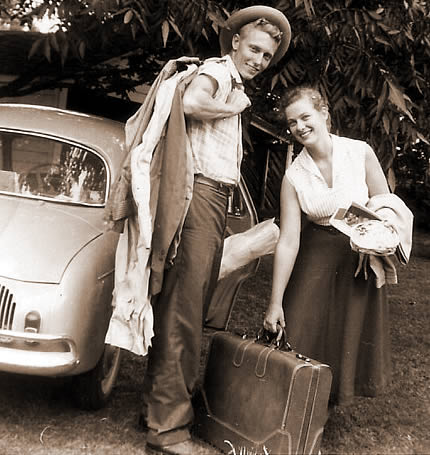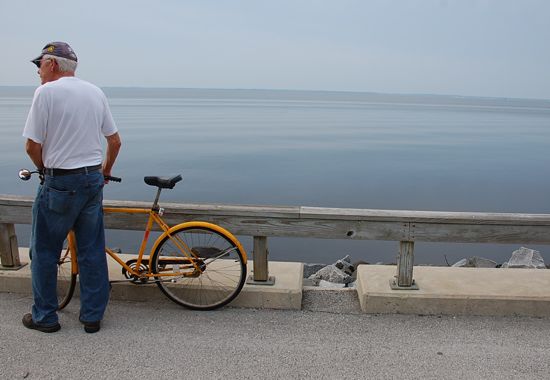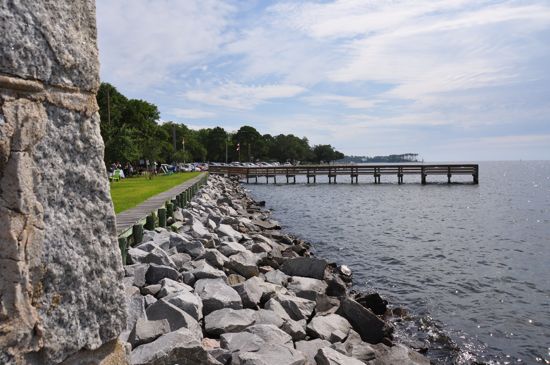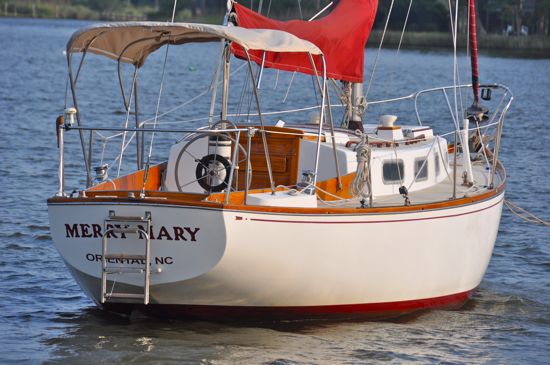It's Tuesday April 23, 2024
News From The Village Updated Almost Daily
June 25, 2011
The hardest thing to get George Duffie to talk about, says his friend Greg Piner, was George. In recent days, George’s friends have been talking about him. About the retired minister’s gentle, but knowing, spirit. About his love of fishing and sailing, and his sail boat, “Merry Mary” and its namesake, his wife, Mary.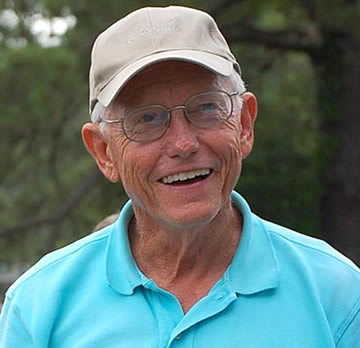 George Duffie
George DuffieThey talked a lot about the encouragement he gave others. And his sly sense of humor delivered with a cadence like a sweetly cast fishing line. Barely a ripple of a smile, as hook, line and sinker were planted with precision.
George Duffie, a retired Methodist minister, and avid sailor and fisherman, died Saturday June 18. He was 76 and left behind his wife of 52 years, Mary, three children, Luther, Sommers and Alyson and 8 grandchildren.
George and Mary Duffie had spent Friday night on board “Merry Mary”, their Tartan 34. They’d traveled up to Broad Creek on Friday in advance of Saturday’s Summer Solstice race. They’d attended every one of the Whortonsville regattas for almost a decade. He was looking forward to this one in particular because there were a record 4 Tartan 34’s registered.
 George and Mary Duffie at the 2009 Whortonsville Yacht and Tractor Club Summer Solstice Regatta.
George and Mary Duffie at the 2009 Whortonsville Yacht and Tractor Club Summer Solstice Regatta.But overnight Friday, George complained of not feeling well and after a Saturday morning dinghy ride to shore, they drove to the hospital in New Bern. Several hours later, while the race was going on, George Duffie passed away.
As the word spread Saturday, some took solace in noting how George had spent his last day preparing to go sailing, on the boat he loved, near the waters he knew by hull and fishing rod since he was a young boy.
George and his mother, 1935.George Duffie, Jr was born in 1935 in Rock Hill, South Carolina where his father was a Methodist minister. In the summers, he visited Oriental as it was the hometown of his mother, Audrey Midyette Duffie. The family had a cabin near what is now the corner of High St and South Avenue — a waterfront spot his mother sold upon returning one year to find much of the land eroded by a storm. (A mule was used to winch the home to a site a block away, a process that took much of a summer.)
George with his parents and younger brother and sister.[page]
During those visits, George honed his fishing and sailing in the waters of the Neuse just off of Oriental. For a time, he worked heading shrimp at the harbor. Mary also says he recalled spending time just watching men in the neighborhood building boats.
George Duffie as a young boy.Back in South Carolina, George’s family moved around, as his father took appointments for a few years at a time at various churches. A family story from those days, shared the other day, suggests the even-keeled demeanor George was known for was something that evolved over time.
Mary says that on George’s first day at Chicorah High School in North Charleston, he checked in at the principal’s office and then, with a book and clipboard in hand, went to his first class. That’s where a student commented that he was “the preacher’s kid” whereupon the clipboard and book met the student’s face. As George’s lifelong friend, and fellow retired minister Bob Clyburn put it George “knocked him out cold.” Son Luther says that five minutes after leaving the principal’s office, his father was sent back there.
During the mid-1950’s while a student at Wofford College in South Carolina.Several years later, the preacher’s kid was on track to become a preacher himself, after spending part of a summer working on a mission in Mexico. In 1955, George was a junior attending Wofford College when he went on a blind date to a football game. Mary Duffie, who was then a high school senior, says that first meeting is preserved in a photo — a photographer friend happened by “five minutes after we met for the first time at the bottom of a staircase.”
George & Mary (at right)… minutes after meeting in 1955.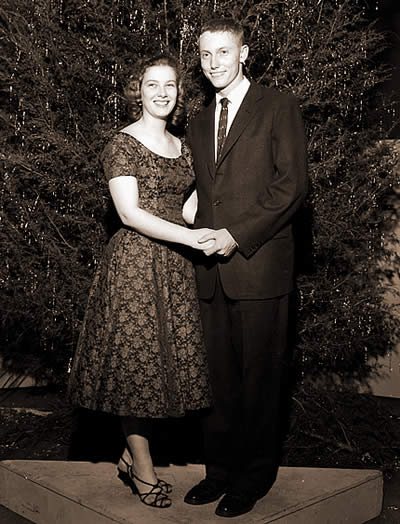 At a winter dance, 1956.
At a winter dance, 1956.[page]
They married three years later in July of 1958. A few years ago, he related that before the wedding, with funds a bit tight while at Duke Divinity, he wanted something more than what the occasional preaching could bring in. So he submitted to a medical experiment involving catheterization. Mary Duffie says that for that, he got $30 and a lesson that, “it probably wasn’t worth it.”
Honeymooners George & Mary Duffie.George and Mary lived in South Carolina where he worked as a minister, and she as a school teacher. They had three children, Sommers, Luther and Alyson.
Fellow minister, Bob Clyburn says that in the 1960’s George was “one of the leading lights” in getting black Methodist churches and white Methodist churches in South Carolina to merge in to one conference of churches. It didn’t come without resistance.
Greg Piner says George told him that he’d alienated some people “because of his stands.” At one gathering where civil rights issues were debated, George’s own father addressed the crowd, cautioning against making changes too quickly. He was followed at the podium by George, the preacher and preacher’s kid, who countered his father’s position.
In 1969, George was tapped to be the chaplain for Methodist students at the University of South Carolina. Bob Clyburn says George “stood with the students, but also with the administration. He could talk and listen to both.” He says that George counseled that “there must be order.. and right ways to protest.”
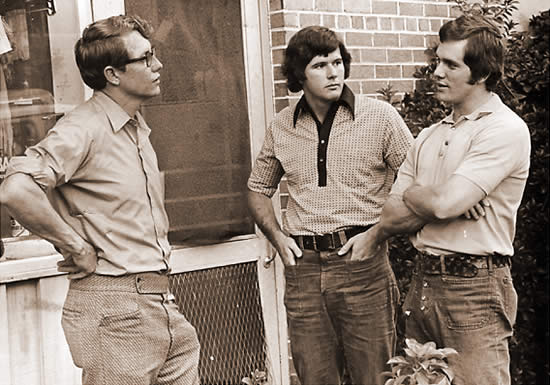 George Duffie, at left, during his years as chaplain at USC.
George Duffie, at left, during his years as chaplain at USC.Mary Duffie recalled another incident when the comedian and activist Dick Gregory was to come to the USC campus and an organization of black students wanted him to meet only with black students. George said no on the grounds that there shouldn’t be a separation by race. A lay-in ensued, and for three days, Mary recalled, George stepped over the bodies of protesters on his way to his office, not relenting on the issue.
[page]
In the mid-80’s, George became district superintendent of the Methodist Church in SC. He set up a Residency Program for new ministers, what several as his lasting contribution. lStill in place today, it was patterned on the residencies for medical doctors. Veteran ministers provided mentoring and there were settings where young ministers could talk about the challenges and isolation they faced, often in rural communities.
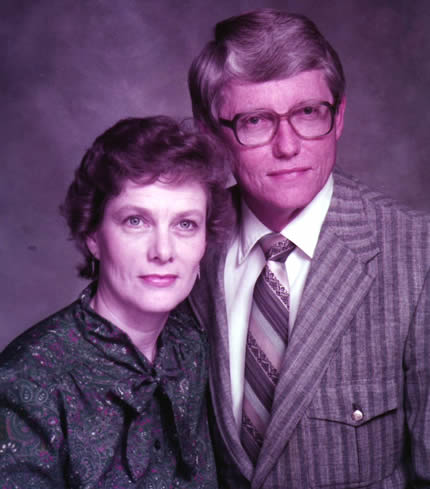 George and Mary Duffie.
George and Mary Duffie.Throughout his career in SC, George, Mary and their children traveled to Oriental during their vacations. Luther Duffie and his sister, Alyson remember the trips here — packing one boat, then a bicycle and another boat on the top of the family car. As in George’s youth, it was to visit family; by the 1970’s, George’s parents had moved to Oriental. (His mother drowned in the river while fishing during a nor’easter in 1975.)
George retired in the late 1990’s, and about a decade ago, he and Mary decided to make Oriental their home for good. They got involved with SCOO, the Sailing Club of Oriental. He volunteered at Oriental’s History Museum, in particular tracking the history of his uncle, Lewis Bracy Midyette who was killed in action during WWII.
George Duffie at Oriental’s South Avenue waterfront, August 2009, surveying the jumping fish in the early morning. Ken Pitts says he’ll remember his friend as “the fellow who rode his old yellow bicycle all over town in his jeans and ball cap. This man was humble and yet self-assured and he was armed with a dry sense of humor that would so suddenly be offered that it would take you by surprise.”Though he was now an officially retired minister, living in Oriental, fishing and riding his yellow bike around town, George Duffie occasionally officiated at a service.
He performed weddings — memorably, one on the Minnesott-Cherry Branch ferry in 2003. A few years later he helped Kathy Kellam and John Griffin tie the knot.
“I loved George. He married us as the Oriental Yacht Club” Kathy wrote the other day. “Mary and he were so gracious and happy for our little ceremony. I’ll never forget how he told us before we started to ‘hold tight to those rings’ because no one wanted to call the diver if they fell through the dock planks.”
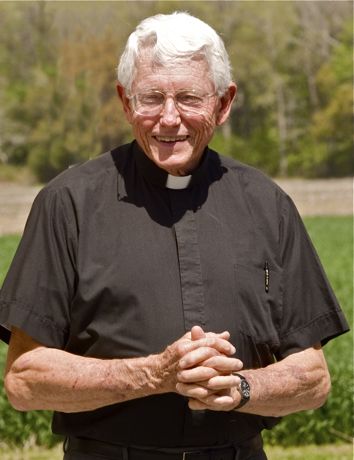 Reverend George Duffie, April 2010, officiating at Caroline and Gary Ramsey’s wedding. (Photo: Caroline Ramsey)
Reverend George Duffie, April 2010, officiating at Caroline and Gary Ramsey’s wedding. (Photo: Caroline Ramsey)George performed Caroline and Gary Ramsey’s wedding last April. “I babysat for his children when I was a teenager in the 1960’,” she said. “George was gentle, compassionate, and supportive. He never failed to express joy to see us when we crossed paths. George touched our souls deeply.”
Donna Mannion recalls George once preaching after a hurricane and cautioning that “we should never say how lucky we are or how grateful we are to have come through it okay, because our neighbors possibly didn’t.”
The view from one of George Duffie’s favorite fishing spots, at the far end of Lou Mac Park. His funeral was held in the park on Wednesday.Ben Casey says he remembers that the few times he heard George preach. “he spoke with emphasis…but without ever raising his voice or shouting.” And, says Ben, he put the simple pause to great use and made Biblical stories contemporary.
[page]
George Duffie’s funeral took place Wednesday morning at Lou-Mac Park. There, Oriental Unite Methodist Church minister Keith Sexton also spoke of George’s “gentle soft cadence.” When he preached, Sexton said, “every word was thought over before it was spoken as if he knew exactly who he was talking to.” As his family observed, the tone was no different from how he spoke in everyday conversation.
“His sermons were just like he was talking to you.”
Keith Sexton praised George’s quiet style and how he “had a great way of saying, ‘no’”. He did it, Sexton said, by saying instead, “Let’s give it a try and see how it works out.”
Sexton also shared the story of what happened when George and Mary’s son, Sommers took what he thought was an unloaded gun to his bedroom and shot a hole through a dresser. When told of it, George said, “Okay” and removed the dresser from the room.One day it reappeared, fixed, without a scratch. Nothing was said. It was, Sexton said, “a gift. A sermon that didn’t have a single word.”
George’s passing struck an especially sad chord for Keith Sexton, who has been at the Oriental church for about two years.
George Duffie, he said, “was my best friend, my mentor, my pastor and a second father.” In what seems like an echo of the Residency Program George set up in South Carolina, the two went sailing together and “on the water, I could share my heart with him and it didn’t matter what I told him, he was always encouraging.”
“There will never be another George Duffie in my life. He helped me find a home in this town.”
Asked on Sunday morning if there was one word to describe George Duffie, his friend Ken Pitts paused before saying, “he was too complicated for that.” He was loving. And caring, Pitts said. But there was grit, too, and times when he did say words that needed saying.
“Seven or eight years ago,” Pitts said, George “was asked to do the ‘Blessing of the Fleet’ over at Hobucken, which he did. And then he spoke of the need for the fisherman over there to quit dumping their sewage. They didn’t like that.”
Similarly, Pitts recalled, “He was on the (Oriental) Planning Board and spoke the truth and they didn’t ask him to come back,” recalled Pitts. “And yet, he’s one of the most loyal citizens this town had.”
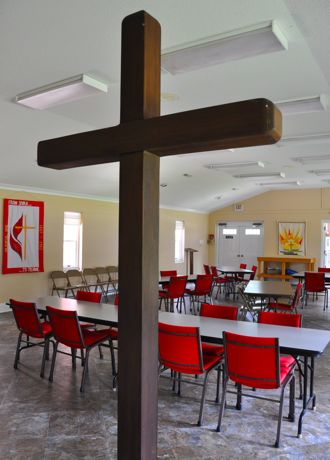 New wooden cross in the Fellowship Hall of OUMC. George Duffie built it of lumber from a friend’s boat project.
New wooden cross in the Fellowship Hall of OUMC. George Duffie built it of lumber from a friend’s boat project.George Duffie’s work for Oriental United Methodist Church extended beyond the pulpit. In the past few years, he took on several woodworking projects. There was a large cross, for one. And tables, one for the library and more recently, a table more than 11 feet long for the conference room. Around it, in George style, people can talk and work things out.
[page]
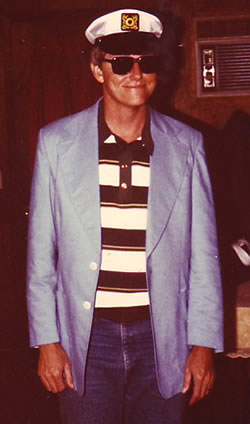 Mary Duffie says that George didn’t care much about clothes.
Mary Duffie says that George didn’t care much about clothes.Some friends this week were also remembering the wood work he did for another gathering spot. After 2003’s Hurricane Isabel covered the floor of The Bean with several inches of water, George helped Russ Stewart refurbish the floors.
“He took so much pride in his work,” said a friend, Ralf Anselm. “And he did his homework.”
Ken Pitts echoed that. “If George didn’t have an answer, he would look it up on his computer, or in a book, learn the “ins and outs” of the problem, and then explain it to you in such detail you would be in awe. Then he was ready to get to work fixing the actual problem.”
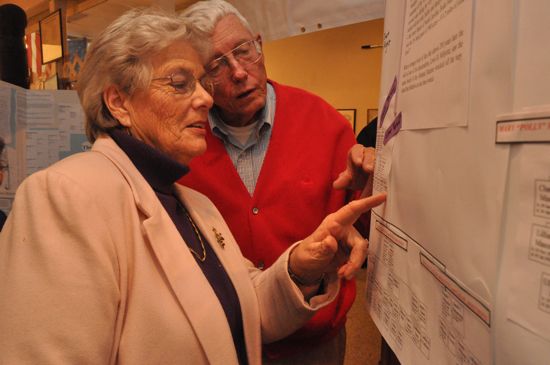 Mary and George Duffie at Oriental’s History Museum, December 2010 at the opening of an exhibit about the Midyette family, looking for George’s mother’s place on that family tree. George was a volunteer at the museum and contributed a history about his uncle Lewis Bracy Midyette who died in WWII.
Mary and George Duffie at Oriental’s History Museum, December 2010 at the opening of an exhibit about the Midyette family, looking for George’s mother’s place on that family tree. George was a volunteer at the museum and contributed a history about his uncle Lewis Bracy Midyette who died in WWII.At the Duffie home on Tuesday, Mary Duffie spoke of a ladder to the attic that had been a bear to put in place and that she’d implored George to make something easier to use. George redesigned it, and as she unfolded it Monday, messages from George were revealed, warning the user step by step — on the step — about just how to deploy it.
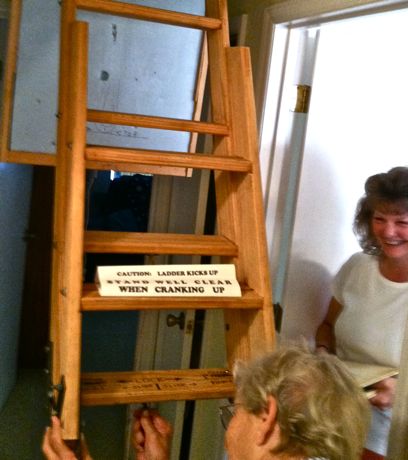 Climbing George’s ladder. George placed step by step (literally) directions, cautioning about intricacies in the motorized device and anticipating issues a user might have with it. Mary and their daughter Alyson demonstrated the other day.
Climbing George’s ladder. George placed step by step (literally) directions, cautioning about intricacies in the motorized device and anticipating issues a user might have with it. Mary and their daughter Alyson demonstrated the other day.As Greg Piner remembered his friend this week, he laughed about growing up in the Methodist Church in eastern North Carolina and thinking that there was a test to weed out any new minister who showed any mechanical ability. George busted that impression, he said. “George had a great engineering mind.”
Piner says George had passions for sailing and woodworking, and combined a “childlike excitement for life” with an “uncommon wisdom that made you feel good.”
“You just very quickly found you could get on a level of conversation that was substantive. He touched my life like few have.”
[page]
Just as George as a boy had watched boat builders ply their craft in Oriental, in recent years he was doing that once again after hearing that Oriental resident Robbie Beal was building a boat from scratch.
Sandie Beal says that it was her husband’s first go at boat building and that George stopped by often, offering encouragement. “When he talked to Robbie about building the boat it was always with respect, never wondering why he was doing it this way or that. Robbie always listened to George because he knew there was wisdom in what he said.”
Time and again this week, friends recalled George Duffie’s love of sailing and in particular, doing so on “Merry Mary.”
“He loved that boat,” said Donna Mannion.
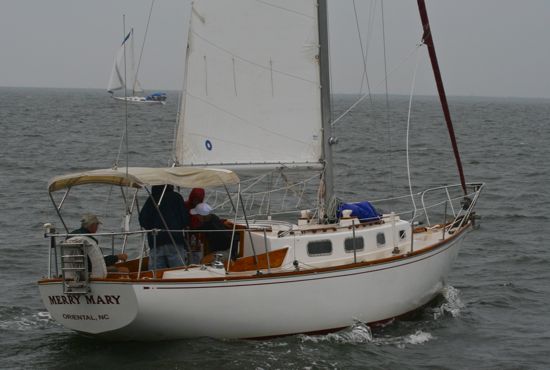 At the helm of “Merry Mary” in the 2008 Whortonsville Yacht and Tractor Club’s Summer Solstice Regatta.
At the helm of “Merry Mary” in the 2008 Whortonsville Yacht and Tractor Club’s Summer Solstice Regatta.Sailing “Merry Mary” is what George Duffie planned to do last Saturday. Jeannette Santoro, who with her husband Nick ran the Summer Solstice Regatta in Whortonsville for 20 years, remembers that “George was the first one to call in” to enter in the race.
George and Mary Duffie’s Tartan 34, “Merry Mary”.“He was a real fan of the event,” NIck Santoro said. “He was always seeing if he could get other Tartan 34’s here from the Chesapeake. Or Mars.” At the solstice race dinner on Saturday night, as news of George’s death settled in, Gordon Kellogg noted that there were four Tartan 34’s registered this year — a record. That had to have made George feel good he said, his voice trailing off, acknowledging that only three had raced.
And when not out on the water on board “Merry Mary”, George could often be found at the water’s edge, fishing in the early morning hours near sunrise.
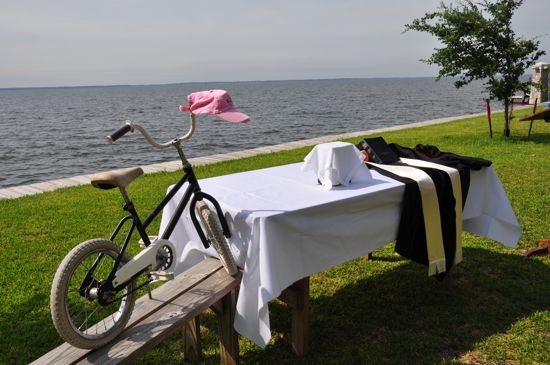 The altar for George Duffie’s funeral at Lou Mac Park on Wednesday. At right, his minister’s stole, at center, his remains which were to be spread later on the Neuse. At left a grandaughter’s pink bicycle he painted black for a grandson.
The altar for George Duffie’s funeral at Lou Mac Park on Wednesday. At right, his minister’s stole, at center, his remains which were to be spread later on the Neuse. At left a grandaughter’s pink bicycle he painted black for a grandson.George Duffie’s funeral took place Wednesday morning at Lou-Mac Park, just steps from his favorite fishing spot. Minister Keith Sexton spoke of George liking the simple things, such as taking his grandchildren fishing — and patiently re-baiting hooks that caught more rocks than fish — or spending a day sailing with them and having them fall asleep on the deck on the run home.
George Duffie’s love of the water wasn’t lost on his children and grandchildren. This week, his daughter Alyson shared the chorus of a song she wrote — and that others in the family performed — 6 years ago when George turned 70. The many honorifics in the song were earned — George did have a PhD in Education and was an ordained minister and a captain — though true to George’s unassuming form, few may have known that.
“Down in Oriental, that’s where he can be seen
maybe on his bike, or maybe at The Bean.
But you’ll always find him on the water in his boat,
The Mr. Rev. Dr. Captain George will always be afloat!”George Duffie was cremated. His family says his ashes will be spread on the river that he loved.
Ken Pitts says he will remember George for many things.. among them, “the fellow who rode his old yellow bicycle all over town in his jeans and ball cap. This man was humble and yet self-assured and he was armed with a dry sense of humor that would so suddenly be offered that it would take you by surprise.”
Audio from George Duffie’s Memorial Service
The audio was recorded from the PA system at the service. The piano was connected so it is clear, however the chorus was not so it is not audible. Reverend Keith Sexton can be heard just fine.

